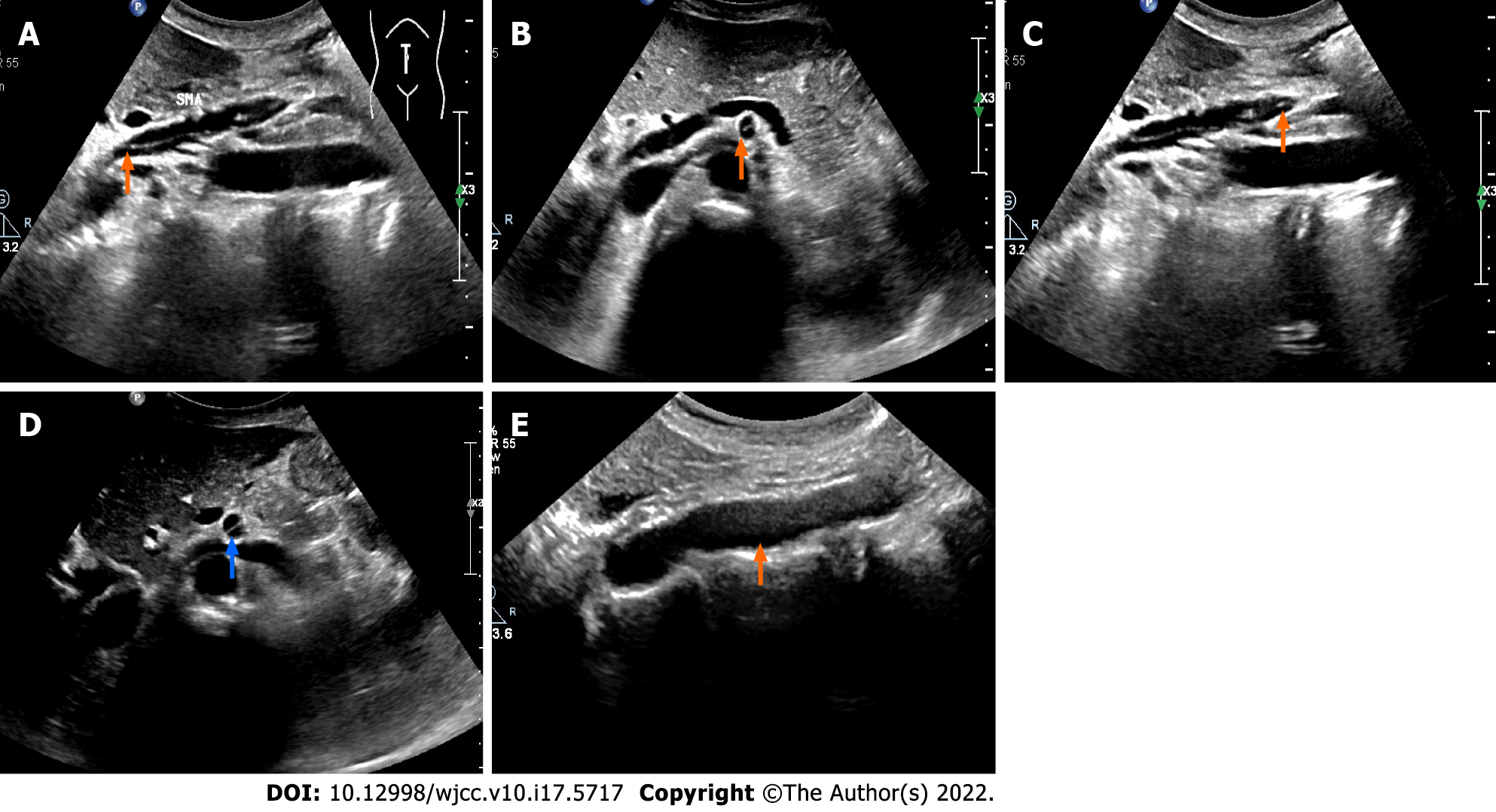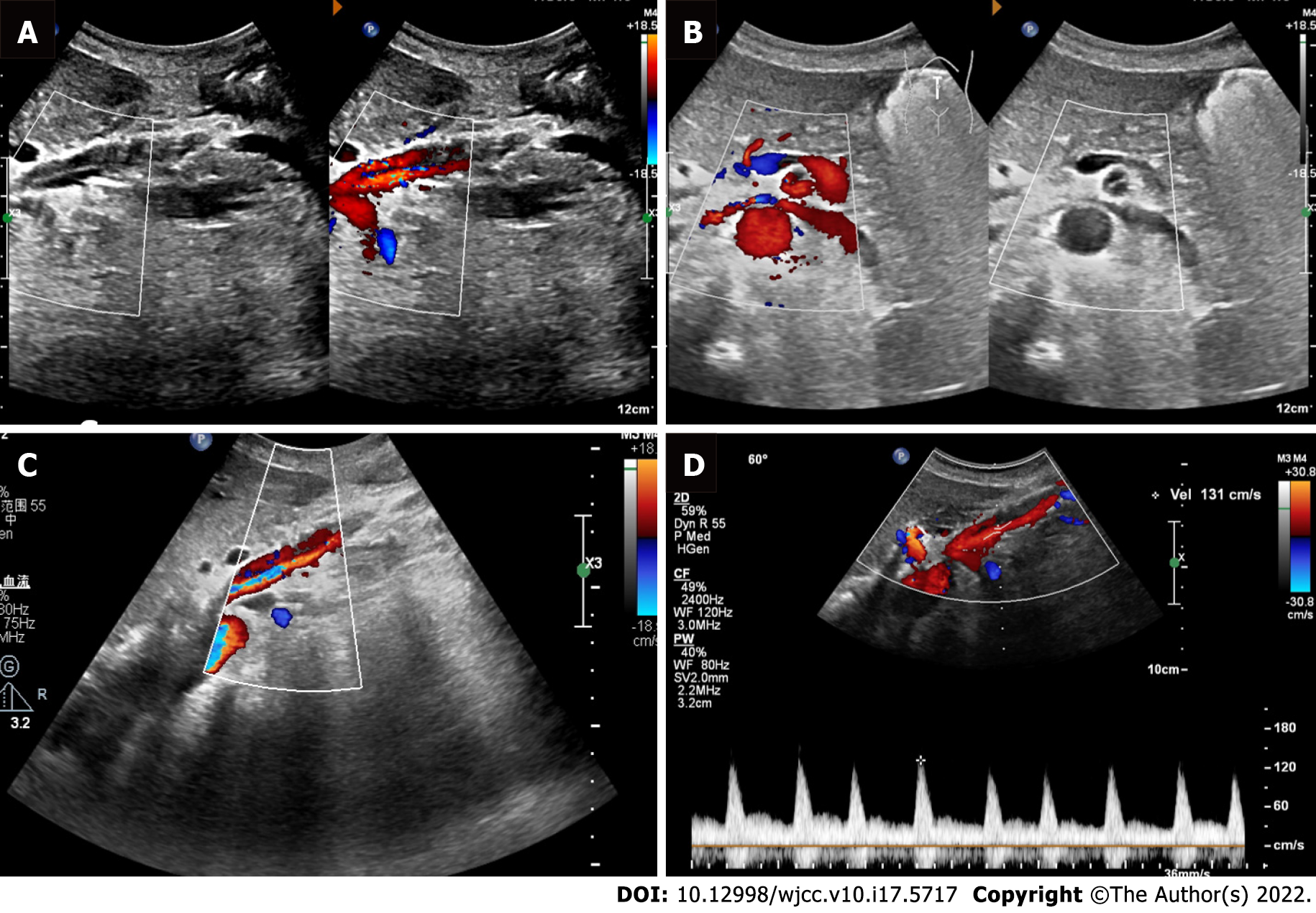Copyright
©The Author(s) 2022.
World J Clin Cases. Jun 16, 2022; 10(17): 5717-5722
Published online Jun 16, 2022. doi: 10.12998/wjcc.v10.i17.5717
Published online Jun 16, 2022. doi: 10.12998/wjcc.v10.i17.5717
Figure 1 Gray-scale ultrasound showed the superior mesenteric artery dissection and abdominal aorta.
A: Ultrasonic longitudinal view demonstrated the opening of superior mesenteric artery dissection (SISMAD) (orange arrow); B: Transverse view demonstrated the opening of SISMAD (orange arrow); C: Ultrasonic longitudinal view showed the distal end of SISMAD (orange arrow); D: Transverse view showed the distal end of SISMAD (blue arrow); E: No abnormal echo was observed in the abdominal aortic lumen (orange arrow).
Figure 2 Doppler ultrasound showed the blood flow of the superior mesenteric artery dissection.
A: Ultrasonic longitudinal view showed the flow at the opening of the superior mesenteric artery dissection (SISMAD); B: Ultrasonic transverse view showed the flow at the opening of the SISMAD; C: Color Doppler flow imaging showed the true and false lumens of the SISMAD; D: True lumen velocity of superior mesenteric artery dissection was measured by spectral Doppler.
Figure 3 Contrast enhanced computed tomography (CECT) showed superior mesenteric artery dissection.
A: Cross-sectional view of the superior mesenteric artery dissection (SISMAD) (orange arrow) on CECT; B: Sagittal view of proximal SISMAD on CECT (orange arrow); C: Sagittal view of distal SISMAD on CECT (orange arrow).
- Citation: Zhang Y, Zhou JY, Liu J, Bai C. Diagnosis of spontaneous isolated superior mesenteric artery dissection with ultrasound: A case report. World J Clin Cases 2022; 10(17): 5717-5722
- URL: https://www.wjgnet.com/2307-8960/full/v10/i17/5717.htm
- DOI: https://dx.doi.org/10.12998/wjcc.v10.i17.5717















